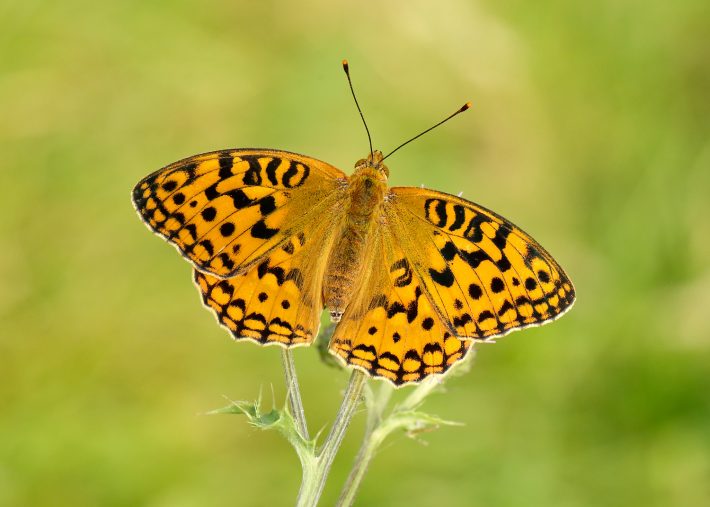State of Nature 2016 – new analytical approaches and knowledge gaps
The State of Nature 2016 report published today (14 September 2016) is the most comprehensive assessment to date of the status of species, across a broad range of taxonomic groups, in the UK.

The report presents measures that will be familiar to readers and others that are newly developed. Take a look at our blog on the pocket guide to the statistics.
In this blog I want to highlight some of the developments we have made in our analytical approaches and the remaining gaps there still are in our knowledge in order to highlight ways that readers might be engage with future State of Nature projects.
New data and new techniques
Species are the building blocks of our ecosystems and we regard them as the basic measure of how nature is faring in the UK. We have updated the measures we presented in the first State of Nature report in 2013, and in many cases have been able to bring in new datasets and improve the underlying data used to develop trends of individual species.
Data availability is obviously key to projects such as these. For the 2016 report, the partnership has analysed over 50 datasets bringing together over 40 years of monitoring by 50 conservation and research organisations. These datasets represent nearly 10,000 species in total (full list of species included in these analyses available to download from the State of Nature webpage). Advances in analytical methods have enabled us to incorporate data from biological recording schemes, alongside that from standardised monitoring schemes, for the first time.
Finding analytical approaches to allow us to use new datasets
National recording schemes collect data on a vast array of taxonomic groups, from slime moulds to spiders (for a full list of these schemes see page 83 in the report). Use of datasets of opportunistic records such as these can be difficult as recording effort varies across the UK and over time. However, statistical techniques have developed since the State of Nature 2013, and one of these – Bayesian occupancy modelling (Isaac et al. 2014; van Strien et al. 2013) – was used here. These models were used to generate annual estimates of the proportion of occupied 1-km2 grid cells for each species.
Once we had these datasets collated our aim was to examine change in overall species status in two main ways: firstly, categorising species into classes of increase, stability of decline over the long term (1970-2013) and the short term (2002-1013). In this way we established 56% of UK species have declined between 1970 and 2013.
This metric captures the ‘big picture’ but doesn’t tell us about the degree of change in species populations over time, and for this we have developed a new index – essentially a ‘Living Planet Index’ for the UK similar to that published in the Netherlands (Van Strien AJ, et al. 2016) This approach allowed us to combine abundance and occupancy data in a single indicator, increasing the sample size available for analyses and allowing us to produce this metric at a national scale and for each of the key habitat breakdowns. The new ‘Living Planet Index’ based on trend information for ~2500 UK species shows a steady decline of 16% in species status between 1970 and 2013.
Still only a small percentage of UK species represented
While these techniques have improved our ability to assess change in the state of UK species, the total species assessed still represents only a very small percentage of what is estimated to be over 72,000 species present in the UK.
An equally important caveat is the taxonomical bias in our data; we have good data for vertebrates such as mammals and birds and robust measures of change for most vascular plants but only a small proportion for the many thousands of diverse invertebrate species. This could skew our results, and if we had a better sample of this vital part of UK biodiversity, we would have even more confidence around the state of our wildlife.
Growing the State of Nature partnership
Developments made since the first State of Nature report in 2013 have been possible by the growth of the partnership, engaging with new data providers and analysts to improve our assessment of change in UK nature.
Alongside the conservation NGOs and species specialist organisations, the 50-plus partners in the report include a range of reputable research institutes and organisations such as the Centre for Ecology and Hydrology, the Natural History Museum and the British Trust for Ornithology, who have been instrumental in working with scientists from the RSPB Centre for Conservation Science to develop new approaches.
There is plenty of scope for developing methods further, the potential for new analytical approaches to assessing change over time, and comparing metrics between reports such as these is exciting and sharing ideas with academics and researchers from across the ecological sciences would certainly open up new areas for collaboration.
For more information
You can download The State of Nature 2016 report rspb.org.uk/stateofnature
Like what we stand for?
Support our mission and help develop the next generation of ecologists by donating to the British Ecological Society.